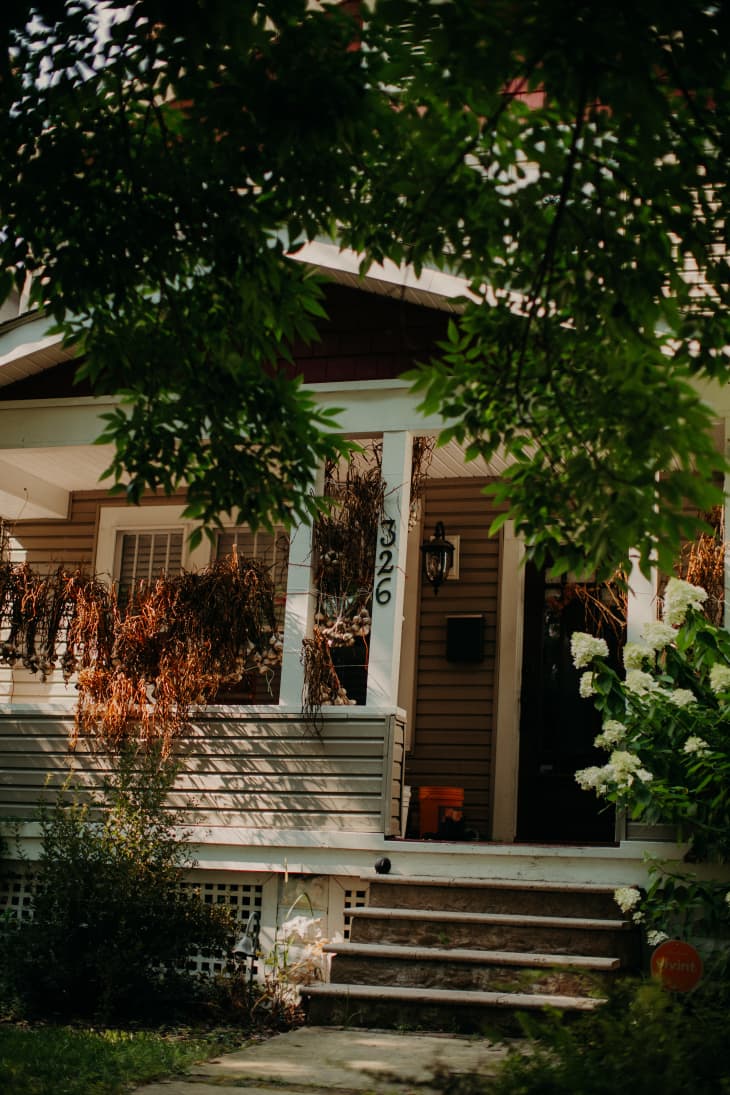7 Shade Plants for That Dark and Boring Section of Your Garden

So you have a shady section of your garden that you don’t know what to do with. Or maybe your apartment or condo has a balcony that’s covered in shade all day. What plants should you put in those corners of your outdoor space?
It’s a wild misconception that part-shade plants are boring. Over the years, I have designed and created dozens of shade gardens with the gorgeous shade plants I’ve listed below (all of which I recommend purchasing at a nursery or garden center, as sometimes it’s difficult to source quality perennials online).
Tip: Don’t forget that even though these plants are living in shadier conditions, they still need regular watering.
Hostas
Hostas can be found in shade gardens all over the world. The Old World Farmer’s Almanac reports that there are over 70 species of hosta and over 3,000 registered varieties available. Some varieties can handle more sun (August Moon, Gold Regal, Minuteman, and Pearl Lake, among others), while most varieties enjoy the cool of the shade. As a general rule, the thicker the leaf is, the more sun the plant will be able to handle. Also, variegated varieties, aka plants that have leaves with different colored streaks (usually white or lighter green) on the foliage, tend to need more sunlight in order to photosynthesize. Hostas flourish when traditionally planted in the ground, as well as in container gardens.
The ASPCA lists all hostas as toxic to cats and dogs.
Solomon Seal (Polygonatum)
Solomon Seal has been a long-time favorite of mine to plant in shade gardens. It’s a woodland plant that grows arching stems with foliage and produces white, bell-like flowers. It cannot tolerate any direct sun, which makes it perfect for shadier situations.
As it matures, it will fill out, lending to a true woodland aesthetic—this is a perfect plant for someone looking to maintain a wild-looking garden. Try pairing it with ferns and hostas.
According to North Carolina State Extension, Solomon Seal is low-level poisonous.
Ferns
Next to Solomon Seal, ferns are my favorite plant for shady areas. There are so many different varieties and textures to choose from that it’s hard to decide which fern to bring home. One of my favorite types is the Japanese Painted Fern, Athyrium niponicum, because of its foliage’s shape and color and the contrast it brings to my garden. I also love using Dryopteris erythrosora, also known as an Autumn Fern, because of its variance of color. It changes from deep green to rusty orange.
According to the Pet Poison Helpline, certain types of ferns are toxic to pets.
Coral Bells (Heuchera)
This plant is most sought after for its dramatic foliage (hello, texture), but it does produce adorable little blooms on a tall stalk. You’ll be able to find varieties in many different colors, from deep plum to neon green.
Coral Bells can thrive in shadier conditions as well as sunnier spots. Each variety is a little different, but I’ve learned that the darker-colored plants can tolerate much more sun than the lighter varieties, so go for the latter if you’ve got a ton of shade. Heuchera is also known for being a particularly drought-tolerant plant.
The ASPCA lists Coral Bells as nontoxic to cats and dogs.
Coleus
Some varieties of coleus can tolerate more sun than others, but most can tolerate lots of shade. Coleus will quickly fill a container, but will grow even larger if planted in a bed. It’s a good option if you want a plant that will grow taller while still appearing shrubby.
If you’re hoping for something really exciting, try the Watermelon Coleus, which looks just as its sounds: The leaves have bright pink centers with neon green edges.
While coleus do bloom, many growers choose to pinch off the buds before they can do so, as they are small and insignificant. I personally think the coleus blooms are adorable. They bloom on a stalk, similar to salvia, and make really pretty cut flowers.
The ASPCA lists coleus as toxic to dogs and cats.
Rose begonias
Rose begonias perform well in containers, hanging containers, and when planted in the ground. They thrive in part-shade and require little maintenance during the season. Make sure you do keep an eye out for powdery mildew, though, as tuberous begonias have a reputation for being quite susceptible to it.
The Rose Petticoat variety is a favorite for its double flowers and delicate coloring. It blooms all season long and does well in the heat, even though it’s planted in the shade.
The ASPCA lists all begonias as toxic to cats and dogs.
Impatiens
Some people shy away from this old-school favorite, perhaps because they don’t want to have an “old lady garden.” To each their own, but impatiens are one of the most tried and true shade-loving plants out there. And there are so many varieties, from single to double blooms, shades of pure white to vibrant red. There’s also a double impatien named Rockapulco that flaunts gorgeous deep pink and white bicolor blooms that you won’t want to miss.
The ASPCA lists impatiens as nontoxic to furry friends.